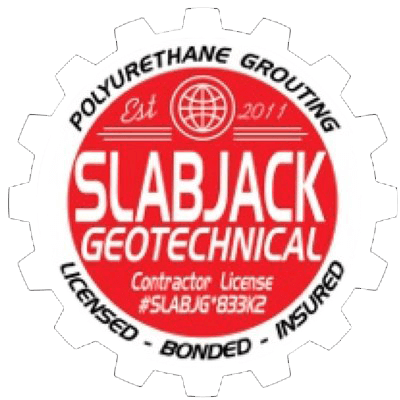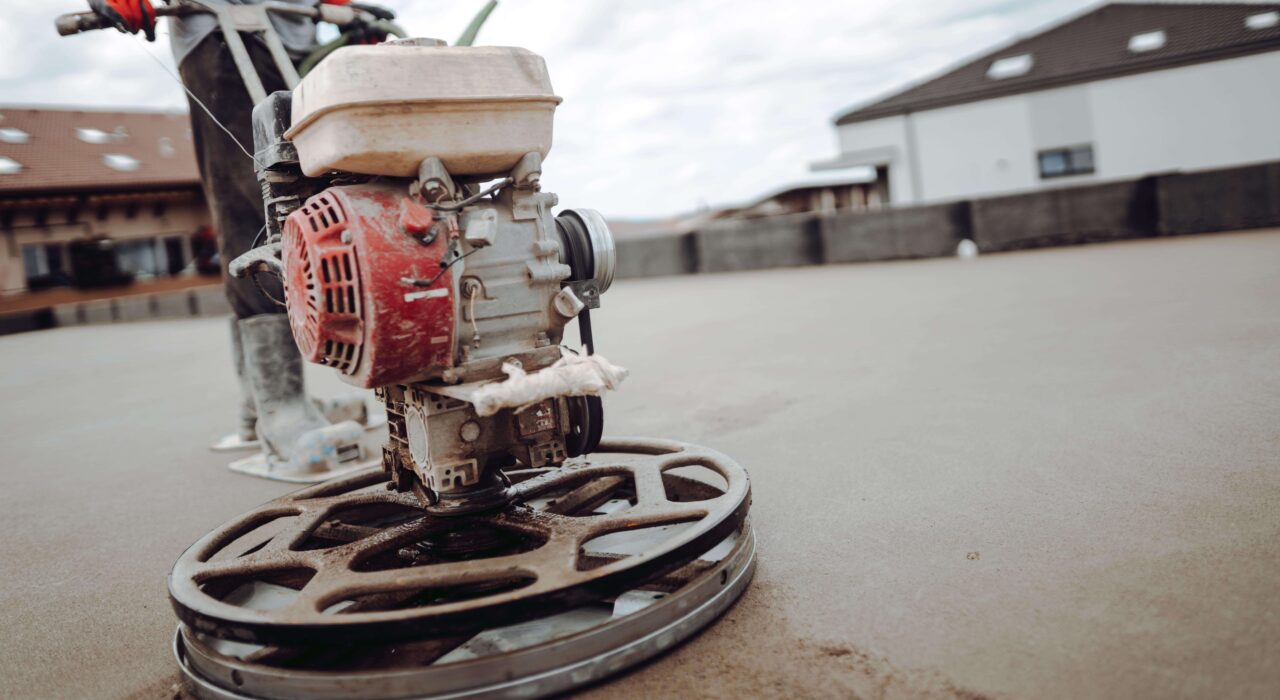Concrete slabs are commonly used in various construction projects due to their durability and strength. However, over time, these slabs can develop cracks and become uneven, which not only affects the aesthetics of the surface but also poses safety hazards. In this comprehensive guide, we will discuss effective methods on how to repair uneven and cracked concrete slab surfaces. Whether it’s a sidewalk, driveway, or patio, these techniques will help you restore the functionality and appearance of your concrete slabs.
Understanding the Causes of Uneven and Cracked Concrete Slabs
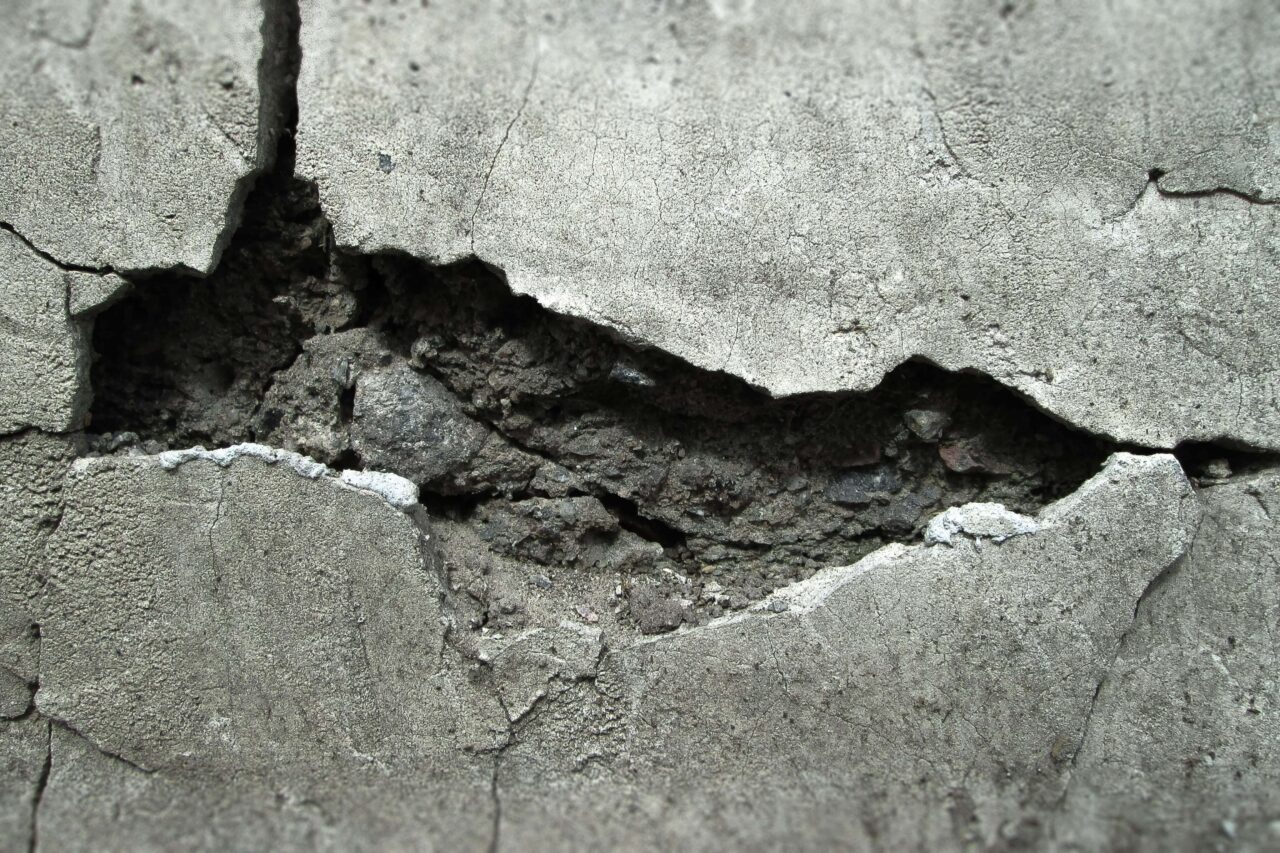
Before diving into the repair process of cracked concrete slabs, it’s important to understand the underlying causes of cracked concrete slabs. These factors include:
- Settlement: When the soil underneath a concrete slab shifts or compresses, it can lead to unevenness and cracks in the surface.
- Freeze-Thaw Cycles: In regions with fluctuating temperatures, water can penetrate the concrete and freeze, causing it to expand and crack.
- Improper Installation: Insufficient reinforcement, inadequate curing, or improper mix proportions during the concrete pouring process can result in slab defects.
- Heavy Loads: Constant exposure to heavy vehicles or equipment can cause stress on the concrete slab, leading to cracks and unevenness.
- Natural Causes: Natural disasters like earthquakes or flooding can cause significant damage to concrete slabs.
Regardless of the cause, the cracks need to be addressed to prevent them from worsening over time. Additionally, if the cracks have created trip hazards, it becomes even more urgent to repair the concrete slab.
7 Tips For Repairing Concrete Slabs
1. Assessing the Damage to Repair of an Uneven Concrete Slab
The first step in repairing a concrete slab is to assess the extent of the damage. Inspect the slab for cracks, spalling, or any other signs of deterioration. Identify the underlying cause of the damage, such as freeze-thaw cycles, water infiltration, or heavy loads. Understanding the root cause will help determine the appropriate repair method.
2. Cleaning the Surface of a Cracked Concrete Slab
Before starting the repair process, it is crucial to clean the surface of the concrete slab thoroughly. Remove any loose debris, dirt, or vegetation using a broom, pressure washer, or stiff brush. Additionally, use a concrete cleaner to eliminate any grease, oil, or stains that may interfere with the bonding of repair materials.
Proper surface preparation is critical to ensure proper bonding between the existing concrete and the repair material. Repair materials need a clean and roughened surface to adhere well and provide long-lasting repairs. Avoiding moisture on the surface is essential, as it can interfere with adhesion and curing.
3. Repairing Small Cracks in Concrete Slab
For small cracks in the concrete slab, you can use a crack filler or a concrete patching compound. Clean the crack with a wire brush or a chisel, removing any loose material. Apply the crack filler or patching compound according to the manufacturer’s instructions. Smooth the surface with a trowel, and allow it to cure as recommended.
4. Filling Larger Cracks and Spalled Areas
For larger cracks and spalled areas, a more robust repair method is required. One common approach is to use a polymer-modified concrete resurfacer. Begin by dampening the damaged area with water. Then, apply a bonding agent to enhance the adhesion between the existing concrete and the repair material. Mix the resurfacer according to the manufacturer’s instructions and apply it using a trowel or squeegee. Smooth the surface and feather the edges to blend with the surrounding concrete.
5. Reinforcing the Uneven Cracked Slab
In some cases, concrete slabs may require reinforcement to prevent future cracking or shifting. One method is to install steel reinforcement bars, commonly known as rebar. Clean the surface around the damaged area, and drill holes to the required depth. Place the rebar in the gaps, ensuring it is properly aligned and supported. Finally, fill the holes with a high-strength epoxy or concrete mix.
6. Preventing Future Damage while Repairing a Cracked Concrete Slab
To maintain the repaired concrete slab and prevent future damage, consider implementing preventative measures. Apply a high-quality concrete sealer to protect the surface from moisture, chemicals, and other contaminants. Regularly inspect the slab for signs of damage and address any issues promptly to avoid costly repairs in the future.
7. Seeking Professional Help
While minor concrete repairs can be done by homeowners, more complex or extensive damage may require the expertise of a professional contractor. If you lack the necessary skills, tools, or confidence to repair the concrete slab yourself, it is advisable to consult a reputable concrete repair specialist. They can assess the damage accurately and provide appropriate solutions to restore the slab’s integrity.
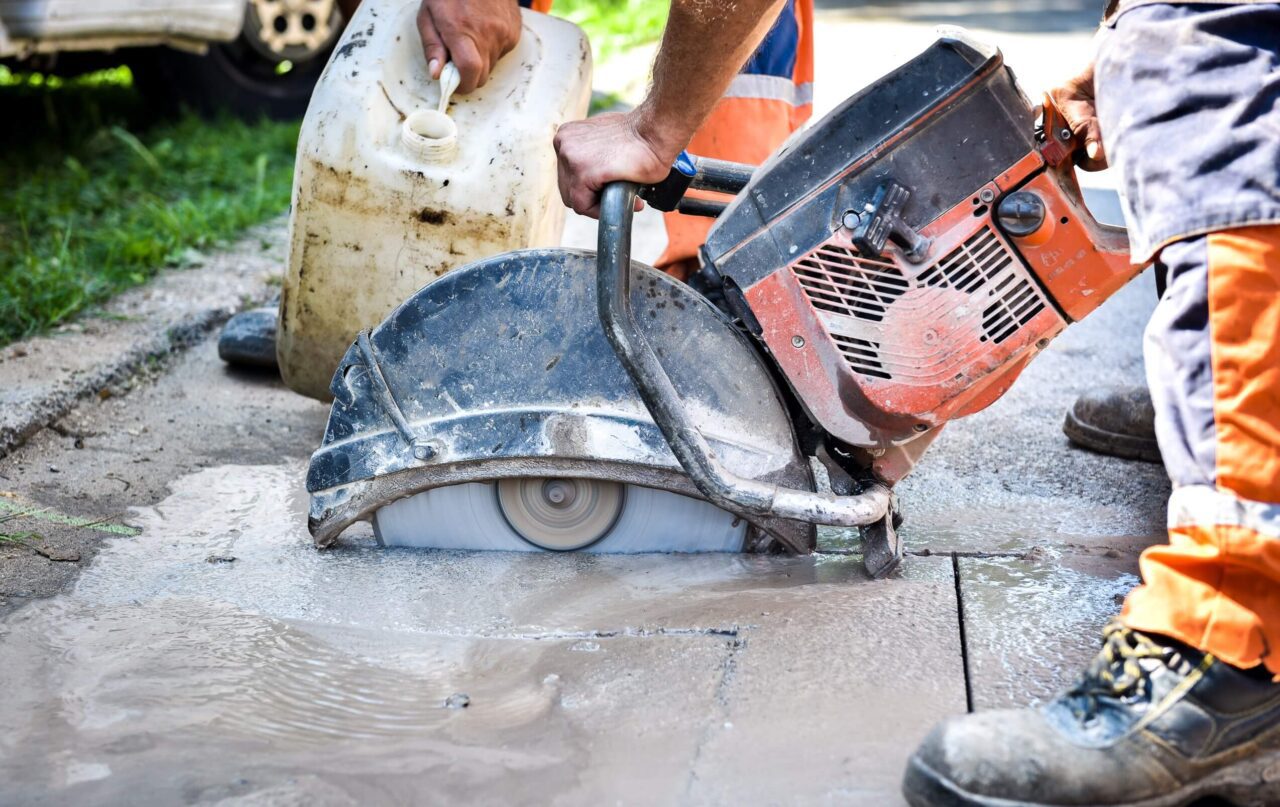
How to Repair Uneven Concrete Slab
Uneven concrete slabs can create tripping hazards and affect the functionality of the surface. Here’s how you can repair uneven concrete slabs:
- Self-Leveling Compound: For minor unevenness, self-leveling compounds can be used. Follow the manufacturer’s instructions to mix and apply the compound, allowing it to flow and level the surface naturally.
- Grinding: If the unevenness is more pronounced, grinding the high spots can help level the surface. Use a concrete grinder and follow the appropriate safety precautions.
- Overlayments: For larger areas, applying an overlayment, such as a thin layer of fresh concrete or a polymer-modified topping, can help level the surface. Ensure proper curing and follow the manufacturer’s guidelines.
Repairing uneven concrete slabs restores their functionality and minimizes the risk of accidents.
How To Repair a Cracked Concrete Slab
Cracked concrete slabs not only detract from the appearance of the surface but also compromise its integrity. Here are some effective methods for repairing cracked concrete slabs:
- Crack Injection: Injecting epoxy or polyurethane resins into the cracks can effectively seal them and prevent further water penetration. Follow the product instructions and ensure proper curing.
- Stitching: For wider cracks, stitching involves drilling holes on both sides of the crack and inserting metal staples or dowels. This method provides additional reinforcement and prevents the crack from widening.
- Concrete Patching: Small cracks can be repaired using concrete patching products, such as hydraulic cement or polymer-based patching compounds. Thoroughly clean the crack, apply the patching material, and smoothen the surface.
Choosing the appropriate repair method depends on the size and severity of the cracks. Properly repaired concrete slabs regain their strength and durability.
Types of Cracked Concrete Slab Repair Materials
There are several effective materials available for repairing cracked concrete slabs. Concrete patching compounds, epoxy injections, and polyurethane sealants are commonly used options that offer unique advantages in different situations.
When it comes to small cracks and surface defects, concrete patching compounds are frequently utilized. These compounds are easy to apply and provide excellent adhesion to the existing concrete. They are versatile enough to be used for both vertical and horizontal repairs, making them a convenient choice for various applications.
For structural cracks that require strong bonding and reinforcement, epoxy injections are the ideal solution. They offer exceptional strength and are particularly well-suited for repairs in load-bearing areas. By effectively restoring the structural integrity, epoxy injections ensure the long-term stability and durability of the repaired concrete.
In the case of uneven cracks that may experience movement, polyurethane sealants prove to be highly effective. Their flexibility allows them to accommodate the natural shifts and prevent water intrusion. Polyurethane sealants are especially suitable for sealing dynamic cracks, providing a reliable solution for maintaining the integrity of the repaired concrete.
Choosing the Right Repair Technique
Selecting the appropriate repair technique is crucial for achieving the desired results. There are several techniques available, including crack injection, resurfacing, and slab replacement, each with its own specific applications.
Crack injection involves the filling of cracks with specialized resins or epoxies, which restores the structural integrity of the concrete. This method is typically employed for addressing minor damage and preventing further deterioration.
Resurfacing, on the other hand, is used when larger areas with surface defects or spalling need repair. It involves the application of a thin layer of concrete or polymer-modified overlay to renew the surface, providing a smooth and durable finish.
In cases where the damage is extensive or the slab is structurally compromised, slab replacement becomes necessary. This technique requires the removal of the entire section and its replacement with fresh concrete. It ensures a complete restoration of the slab’s structural integrity.
Have Uneven or Cracked Concrete Slabs?
When it comes to repairing concrete slab surfaces, it is crucial to address the issues of unevenness and cracks promptly. By following the step-by-step guide we’ve provided on how to repair concrete slabs, how to repair uneven concrete slabs, and how to repair cracked concrete slabs, you can tackle these problems effectively.
If you find yourself in need of professional concrete repair services in Washington or Northern Idaho, look no further than Slabjack Geotechnical. Our experienced team of concrete repair specialists is equipped with the knowledge, skills, and advanced techniques to restore your concrete surfaces to their original integrity.
Don’t let the frustration of uneven or cracked concrete slabs linger; contact Slabjack Geotechnical today for reliable and efficient concrete repair services.
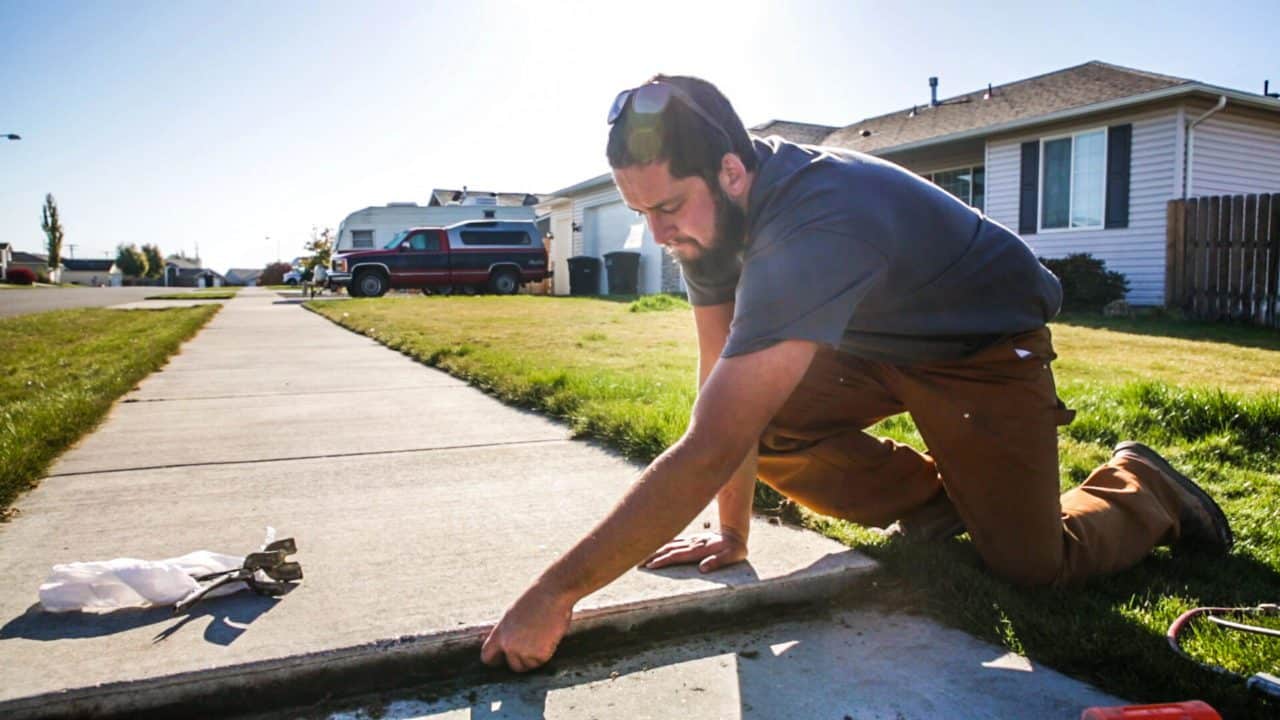
FAQs
Can repairing uneven and cracked concrete slabs improve the overall safety of my property?
Yes, repairing uneven and cracked concrete slabs can significantly improve safety by eliminating trip hazards and reducing the risk of accidents or injuries.
What is slabjacking, and how does it help repair uneven concrete slabs?
Slabjacking, also known as mudjacking, is a technique used to raise and level sunken concrete slabs. It involves injecting a specialized grout mixture beneath the slab to fill voids and lift it back to its original position.
Is slabjacking a suitable solution for all types of uneven concrete slabs?
Slabjacking is commonly used for sunken concrete slabs, such as driveways, sidewalks, and patios. However, its suitability depends on the underlying cause of the unevenness. Consulting with a professional can help determine if slabjacking is the right solution for your specific situation.
